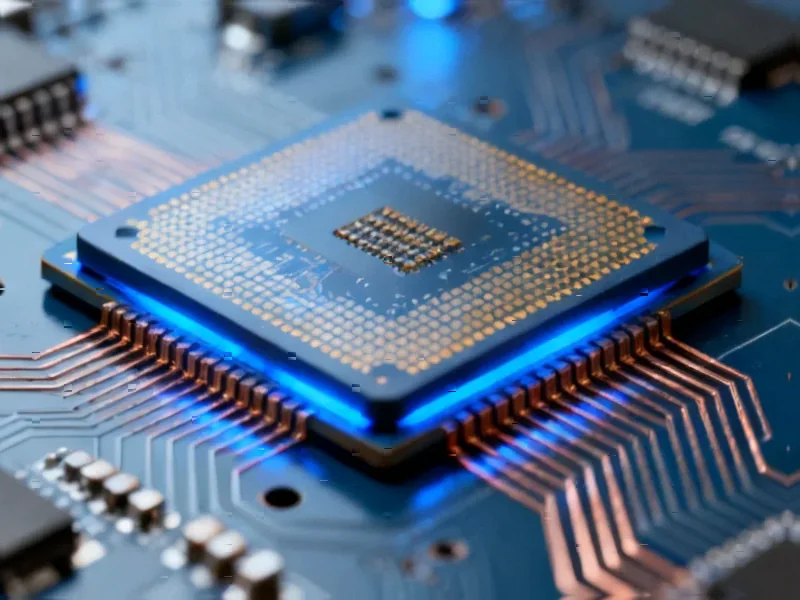According to Forbes, President Trump has signaled he will allow Nvidia to conduct business with China for most of its AI chips while restricting the “most advanced” Blackwell architecture, stating “the most advanced, we will not let anybody have them other than the United States.” Nvidia’s shares rose 1.4% to $205.31 in premarket trading following these comments, coming after the company became the first to breach a $5 trillion market cap last week. During discussions at the Asia-Pacific Economic Cooperation summit in South Korea, Trump praised Nvidia CEO Jensen Huang as “amazing” and described Blackwell chips as “probably 10 years ahead of any other chip,” though he later clarified that specific Blackwell discussions didn’t occur during his meeting with Chinese counterpart Xi Jinping. Huang expressed hope for eventual Chinese market access while acknowledging the final decision rests with Trump, revealing the complex interplay between corporate ambitions and national security priorities. This evolving policy landscape demands deeper analysis of its technological and geopolitical implications.
The Strategic Calculus Behind Chip Segmentation
The administration’s approach represents a sophisticated understanding of AI chip market dynamics that goes beyond simple export controls. By allowing sales of current-generation AI processors while restricting Blackwell architecture, the U.S. maintains China’s technological dependency while preserving America’s competitive edge in next-generation AI development. This creates what I’ve observed in previous semiconductor policy analyses as a “controlled competition” model – where Chinese AI development can continue but remains perpetually behind the cutting edge. The distinction between “advanced” and “most advanced” chips acknowledges the reality that completely cutting off China from AI technology is neither practical nor economically beneficial for U.S. companies, while still protecting foundational technological advantages.
The Gap Between Political Statements and Market Realities
Trump’s characterization of Blackwell as “10 years ahead” reflects political messaging more than technical reality, though the architecture does represent a significant leap in AI computing power. In my assessment of semiconductor roadmaps, while Blackwell’s transformer engine and NVLink technologies provide substantial performance benefits, the gap between U.S. and Chinese AI capabilities is more accurately measured in development cycles rather than calendar years. More importantly, Huang’s comments during the 60 Minutes interview reveal the complex reality that both regulatory permissions and market access requirements must align for successful international business. The statement that “China has blocked us from being able to ship to China” indicates this isn’t a one-sided restriction but a multifaceted trade relationship where both parties exercise control.
Ripple Effects Across the Global AI Ecosystem
This selective restriction policy creates tiered access to computing power that will fundamentally reshape global AI development. Chinese companies and research institutions will need to innovate around computational constraints, potentially accelerating alternative AI architectures and specialized chips. Meanwhile, U.S. and allied AI developers gain exclusive access to Blackwell’s capabilities, creating what could become a two-tier global AI infrastructure. From my tracking of AI development patterns, this division may lead to divergent AI model evolution – with different optimization priorities and architectural approaches emerging in restricted versus unrestricted markets. The long-term consequence could be the development of parallel AI ecosystems with limited interoperability, complicating future international AI standards and collaboration.
The New Reality of Tech Executive as Diplomat
Jensen Huang’s positioning as an intermediary between the U.S. and Chinese governments highlights the evolving role of technology CEOs in geopolitical negotiations. When Trump mentions that further discussions “will be between China and Nvidia, with the U.S. serving as sort of the arbitrator or the referee,” it signals a shift toward corporate-level diplomacy in sensitive technology areas. This creates unprecedented challenges for technology leaders who must balance shareholder interests, national security concerns, and international market dynamics simultaneously. Based on my observations of similar situations in other technology sectors, this corporate diplomacy role often leads to ambiguous accountability and complex compliance requirements that can strain corporate resources and focus.
Long-term Investment and Innovation Implications
The market’s positive reaction to Trump’s comments – with Nvidia shares rising despite restrictions – suggests investors see this as a sustainable middle ground that preserves both revenue streams and technological leadership. However, this approach creates uncertainty for long-term research and development planning. Companies operating in sensitive technology sectors must now navigate a landscape where product roadmaps intersect with national security assessments in unprecedented ways. From my analysis of semiconductor investment patterns, we’re likely to see increased geographic diversification of AI chip development and manufacturing, as companies seek to mitigate political risk while maintaining access to global markets. This could accelerate the very global competition in advanced semiconductor manufacturing that export controls were designed to prevent.




